教学设计中的认知思考
作者:Alyssa Lawson博士.D.
在决定如何设计课程材料时, you might think “how can I design material that is going to effectively transfer the information I want my students to know into my students’ brains?” This is a question that all instructors have thought at least once and likely think every time they put together new content or edit previously used content. 如果你有这样的想法,你并不孤单! 在设计教学材料时需要做出许多决定. 在本文中, I am going to talk about the way in which you can design content that aligns with the way in which your students’ brains think, 以帮助您设计有效的内容.
I am going to start this discussion by diving into two theories of cognition, so bear with me. These tips come from two psychological theories that explain how brains process learning content: 认知负荷理论 (CLT; Sweller, 1988; Sweller et al., 1998年)及 多媒体学习的认知理论 (CTML; Mayer, 2021). Although there are several differences to these theories, those are beyond the scope of this article. 在很大程度上, 以及与教学设计相关的部分, 这些理论告诉我们的是同一件事. 这是, 学生对新信息的认知能力有限, 但并不是所有在课堂上消耗的认知能力都是一样的. There are actually three types of processing that can occur while learning that have different implications for learning.
可能发生的第一种处理类型称为 额外负载(根据CLT)或额外处理(根据html). This type of processing occurs when learners are processing information that is not relevant to the goal of the lesson. 例如, 当学生在课堂上注意他们的手机, 这将被认为是无关的处理. Extraneous processing also occurs when information that is interesting but irrelevant to the goal of the lesson, 被称为诱人的细节, is presented that does not support the students’ understanding the material at hand. This type of processing is not beneficial to learners as it takes up cognitive capacity that does not support their understanding of the material. 像这样, 支持学生的学习, 最终目标是尽可能减少多余的处理.
可能发生的第二种处理类型称为 固有负载(根据CLT)或基本处理(根据html). This type of processing occurs when learners are trying to build a mental representation of the material that is being presented to them. This type of processing is essential to learning and must occur for learning to happen. 然而, 内容特别复杂, 相互关联的, 或者对初学者来说是新的, 基本处理增加. This is because these lessons require students to use more cognitive capacity to create these mental representations. 这种类型的处理必须发生在学生学习中, 但其他类型的处理与更深层次的理解有关, 因此,不让学习完全被必要的处理所占据是有益的. 像这样, 支持学生的学习, the ultimate goal is to manage essential processing.
最后一种可能发生的处理类型被调用 相关负载(根据CLT)或生成处理(根据html). This type of processing occurs when learners are developing a deeper understanding of the content through creating connections within the content itself and between the content and the students’ prior knowledge. This type of processing is highly desirable in learning because it is associated with a better understanding of the material. 然而, 这种类型的处理并不是学习发生所必需的, 但它确实有助于长时间的记忆和更好的理解. Therefore, not all students use this type of processing when it comes to learning. 像这样, 支持学生的学习, the ultimate goal is to encourage generative processing.
现在, 我刚刚花了很长时间讲理论, 这并不能真正帮助回答本文开头的问题. So, 正如所承诺的, I will now give you some concrete suggestions on ways to incorporate what 认知负荷理论/ 多媒体学习的认知理论 tell us about learning into instructional design.
减少不必要处理的方法:
- Remove information that is not relevant to the goal of the lesson (coherence principle). 这看起来像:
- Removing seductive details, or details from your instruction that do not relate to the lesson itself.
- Removing images from slides that do not help your students understand the material better.
- 从幻灯片演示中删除花哨的字体或疯狂的动画.
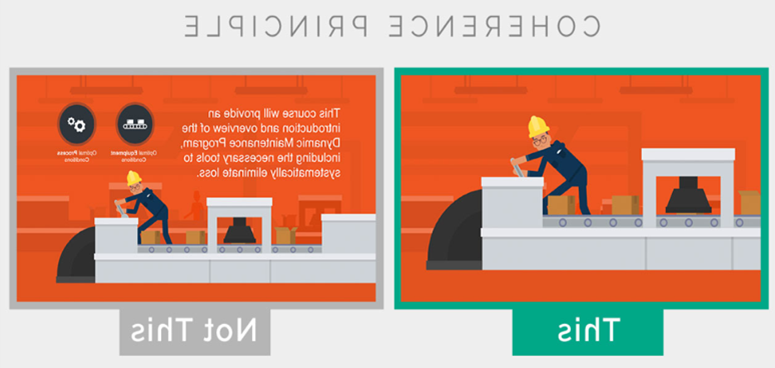
- Add signals that direct your students’ attention toward important information (signaling principle). 这看起来像:
- 突出幻灯片上最重要的观点.
- Using arrows throughout a presentation to direct students’ attention to the important content.
- 圈出学生应注意的关键词.
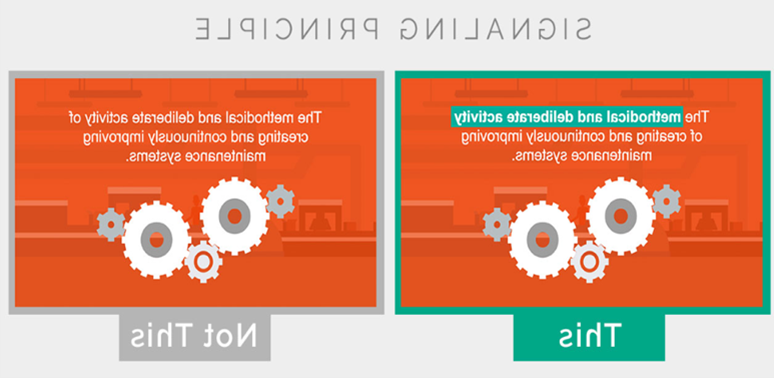
- Keep information that is related together (spatial and temporal contiguity principles). 这看起来像:
- 将文字从图片下方移动到图片的相关位置.
- 只有当相关信息显示在屏幕上时才讨论信息.
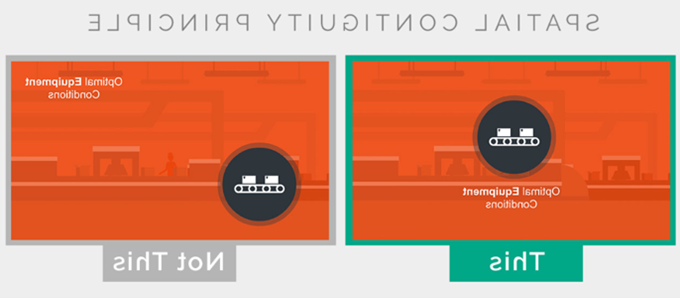
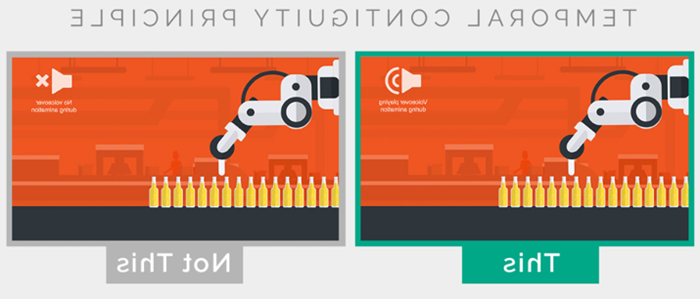
管理必要处理的方法:
- Break a complex lesson into parts that the students can learn step by step (segmenting principle). 这看起来像:
- 将一个复杂的模型分成几个部分,这样每个节点一次只显示一个.
- 整节课分成几个部分.
- 学习者可以控制课程的节奏, 所以他们可以在需要花更多时间处理的部分停下来.

- 在上课前讲授部分内容, 帮助学生熟悉材料(训练前原则). 这看起来像:
- Having students learn important vocabulary from the lesson prior to learning the full lesson.
- Introducing students to new instructional technology prior to using it for learning.
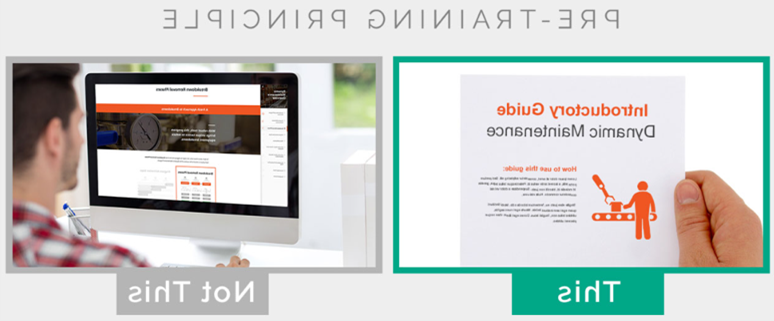
鼓励生成处理的方法:
- Encourage students to engage deeper with learning, through generative learning activities. 这些策略包括:
- 让学生总结所学内容(总结).
- Having students explain to themselves different parts of the material (self-explanation).
- 让学生画出材料的视觉表现(绘图).
- 让学生测试自己的知识(自测).
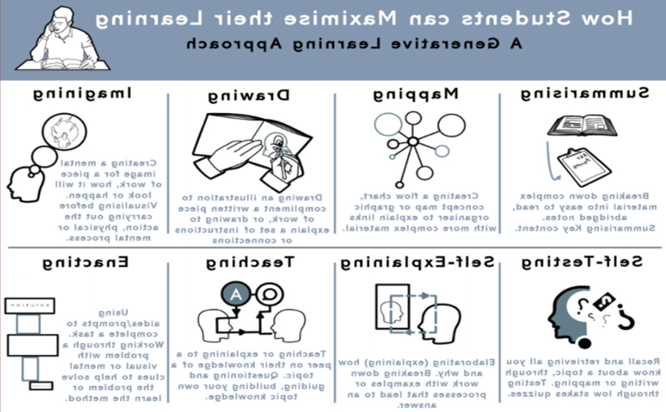
- 与学生交谈时使用个性化语言(个性化原则). This will help students develop a personal connection to the material and help get them more invested in understanding. 这看起来像:
- 使用第一和第二人称语言,而不是第三人称语言.
- 让学生思考与自己相关的信息.
- Presenting information using causal language instead of sounding too professional.
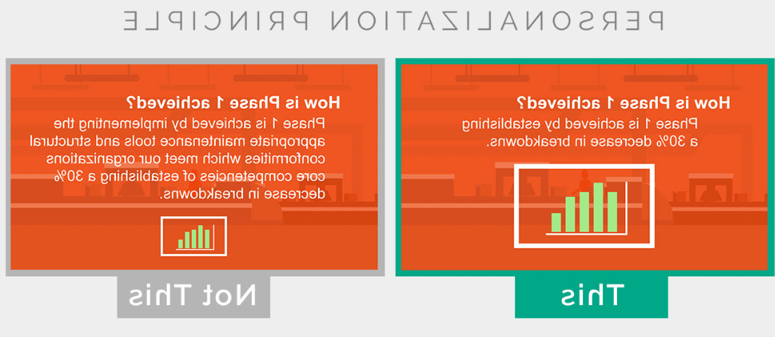
The last tip I have for you when it comes to designing your teaching content is to keep in mind that your brain is also operating the same way as your students; you have a limited capacity for new information as well. 像这样, 在制作新的教学材料或修改已有的材料时, make sure to introduce new teaching principles slowly so you too can get used to it. 幸福的设计!
2019年德贝尔的图片: http://waterbearlearning.com/mayers-principles-multimedia-learning/ 和Main, 2021年: http://www.structural-learning.com/post/generative-learning-a-teachers-guide